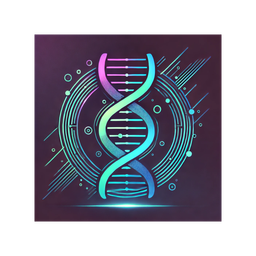
by MG and TF
<p>AI-generated human approved podcast exploring the building blocks of life</p>
Language
🇺🇲
Publishing Since
11/22/2024
Email Addresses
0 available
Phone Numbers
0 available

November 23, 2024
<p>The FGA, FGB, and FGG genes encode the three polypeptide chains—alpha, beta, and gamma—that assemble to form fibrinogen. Fibrinogen is a critical plasma protein involved in blood clotting, wound healing, and maintaining hemostasis. It serves as a precursor to fibrin, forming a mesh-like structure that stabilizes blood clots. Beyond clot formation, fibrinogen plays roles in inflammation, tissue repair, and cellular signaling, making it essential for vascular health and recovery from injury.</p><p>Mutations or dysregulation in these genes can lead to disorders such as dysfibrinogenemia or hypofibrinogenemia, impacting clot formation and wound healing. These genes are also pivotal in therapeutic strategies targeting coagulation disorders and cardiovascular diseases.</p>

November 22, 2024
<p>The ALB gene provides instructions for creating albumin, the most abundant protein found in human blood. This protein plays a critical role in regulating blood plasma colloid osmotic pressure. Interestingly, it has additional functions including:</p><p><strong>Transport</strong>: Albumin acts as a carrier protein for a variety of molecules, both those naturally produced by the body such as hormones (e.g. thyroxine) and fatty acids as well as those introduced from external sources such as ions (Zn/Ca/Mg), metabolites, and drugs.</p><ul><li>Albumin is conserved across vertebrates but exhibits significant variability across species, with differences between albumin domains reaching 70-80%. This remarkable evolutionary diversity is likely attributed to the development of specific binding properties tailored to accommodate new ligands—hormones, metabolites, and toxins—as species evolved.</li></ul><p><strong>Esterase:</strong> Albumin has esterase-like activity, exhibiting the capability to interact with a broad spectrum of substrates.</p><p><strong>Bacterial Growth Inhibition:</strong> Albumin can bind to enterobactin, a bacterial siderophore, and hinder the iron uptake of E.coli from ferric transferrin. This interaction may limit iron utilization and restrict the growth of certain enteric bacteria, including E.coli. However, it's noteworthy that albumin does not inhibit iron uptake mediated by the bacterial siderophore aerobactin.</p><p><strong>Immune modulation</strong>: A peptide derived from albumin, EPI-X4, inhibits the CXCR4 chemokine receptor</p>

November 22, 2024
<p>The ALDH1A1 gene provides instructions for creating aldehyde dehydrogenase 1 family member A1, a protein that belongs to the aldehyde dehydrogenase family. ALDH1A1 is a cytosolic dehydrogenase, meaning it functions in the fluid-filled compartment of the cell. This enzyme catalyzes the oxidation of aldehydes to carboxylic acids. Interestingly, it has a diverse range of functions:</p><p><strong>Alcohol Metabolism</strong>: ALDH1A1 is a key player in the major pathway of alcohol metabolism. It functions downstream of alcohol dehydrogenase, converting the toxic acetaldehyde produced from alcohol breakdown into acetate.</p><p><strong>Retinol Metabolism: </strong>ALDH1A1 is also known as retinaldehyde dehydrogenase 1. It is the second enzyme involved in oxidizing retinol (vitamin A) into retinoic acid. Retinoic acid is essential for growth and development and is used to treat acne.</p><p><strong>Fructosamine Degradation:</strong> ALDH1A1 is also involved in breaking down fructosamines, which are harmful molecules that can form when sugar levels in the blood are high.</p><p><strong>Detoxification: </strong>ALDH1A1 oxidizes aldehydes resulting from lipid peroxidation, including (E)-4-hydroxynon-2-enal/HNE, malonaldehyde, and hexanal, which are highly cytotoxic.</p>
Pod Engine is not affiliated with, endorsed by, or officially connected with any of the podcasts displayed on this platform. We operate independently as a podcast discovery and analytics service.
All podcast artwork, thumbnails, and content displayed on this page are the property of their respective owners and are protected by applicable copyright laws. This includes, but is not limited to, podcast cover art, episode artwork, show descriptions, episode titles, transcripts, audio snippets, and any other content originating from the podcast creators or their licensors.
We display this content under fair use principles and/or implied license for the purpose of podcast discovery, information, and commentary. We make no claim of ownership over any podcast content, artwork, or related materials shown on this platform. All trademarks, service marks, and trade names are the property of their respective owners.
While we strive to ensure all content usage is properly authorized, if you are a rights holder and believe your content is being used inappropriately or without proper authorization, please contact us immediately at [email protected] for prompt review and appropriate action, which may include content removal or proper attribution.
By accessing and using this platform, you acknowledge and agree to respect all applicable copyright laws and intellectual property rights of content owners. Any unauthorized reproduction, distribution, or commercial use of the content displayed on this platform is strictly prohibited.
